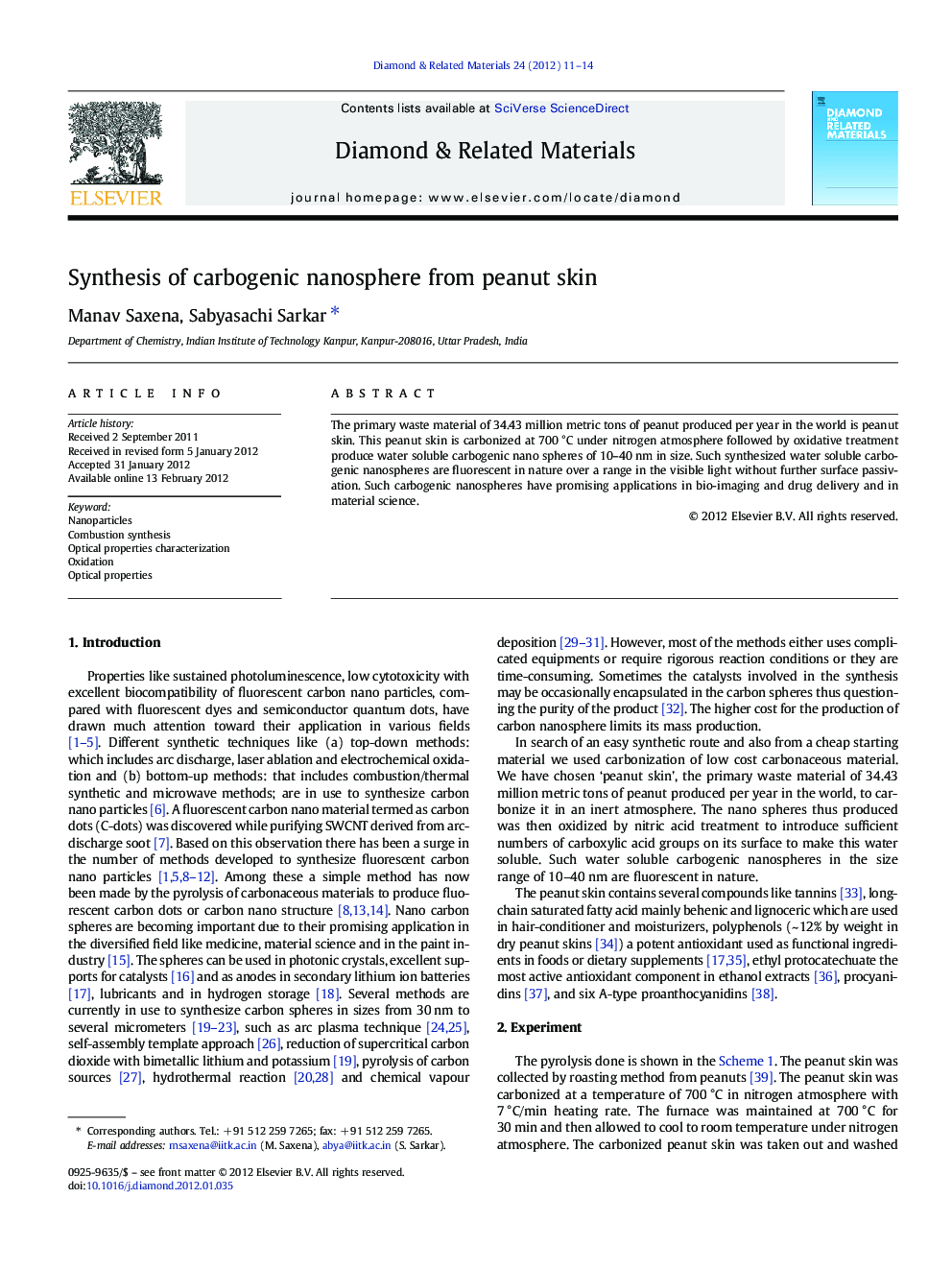| Article ID | Journal | Published Year | Pages | File Type |
|---|---|---|---|---|
| 702407 | Diamond and Related Materials | 2012 | 4 Pages |
The primary waste material of 34.43 million metric tons of peanut produced per year in the world is peanut skin. This peanut skin is carbonized at 700 °C under nitrogen atmosphere followed by oxidative treatment produce water soluble carbogenic nano spheres of 10–40 nm in size. Such synthesized water soluble carbogenic nanospheres are fluorescent in nature over a range in the visible light without further surface passivation. Such carbogenic nanospheres have promising applications in bio-imaging and drug delivery and in material science.
Graphical abstractCarbonization of peanut skin separated by roasting method from peanut, at 700 °C in N2 atmosphere give carbogenic nanospheres within range of 10–40 nm in size. Oxidation of these carbon nanospheres made them water soluble and fluorescent by introduction of hydrophilic groups on its surface. These carbogenic nanospheres have promising application in drug-delivery, supports for catalysts and in different fields.Figure optionsDownload full-size imageDownload as PowerPoint slideHighlights► Carbogenic nano spheres of 10–40 nm size were synthesized. ► No catalyst or rigorous conditions were used. ► Carbonization of peanut skin at 700 °C in nitrogen atmosphere produced carbon nanospheres. ► Surface oxidation introducing hydrophilic groups made these spheres water soluble and fluorescent.
